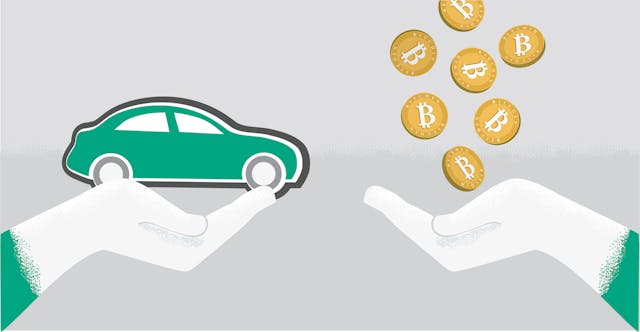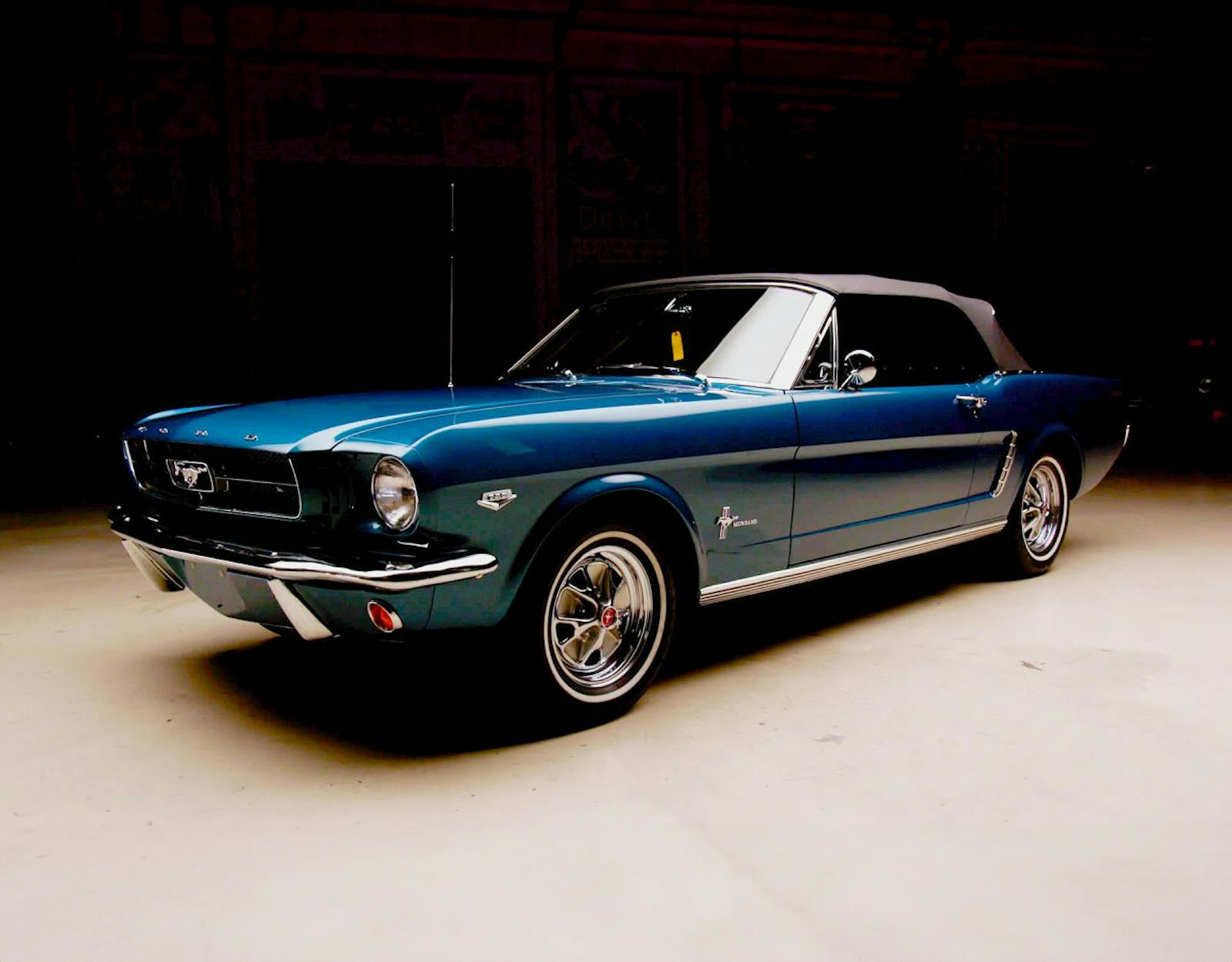Is crypto inflating classic car values?
Our world is abuzz with all things crypto. The value of a single Bitcoin skyrocketed to $67,500 last summer before falling back to earth; cryptocurrency advertising dominated the Super Bowl; and just last week, the President Joe Biden signed an executive order for research into a Central Bank digital currency.
Whether all this is a good thing depends on whom you ask. Crypto supporters tout Blockchain—foundational for virtual currencies and NFTs—as the way to build trust in an era of fake news, hackers, and war. Detractors worry it’s an unregulated cesspool sucking up capital and, due to the massive computing power required to maintain the blockchain, spewing carbon.
One thing everyone can agree on: Crypto has created a lot of wealth. As of this writing, the global crypto market capitalization is $1.72 trillion, a river of newly created money that is fast flowing into other markets. NFTs made up some 16 percent of the global art market by value last year, according to a new report published by nonfungible.com and L’Atelier. This flood of new wealth, combined with volatility that can see a halving of value in months if not sometimes days, seems worryingly analogous the 1980s, when Gordon Gekko-minded millionaires helped inflate the price of hard assets spanning vintage wine to Van Goghs. And, oh yes, they also bought a lot of classic cars, driving values sky high and, when the money and cocaine ran out, precipitating a crash that took the market more than a decade to recover from.
We wondered how much of that crypto wealth is influencing today’s heated collector car market and what potential—and risks—come with it.
The State of Play
The general sentiment among car industry people we canvassed is that cryptocurrency has a lot of potential but little of it has been realized.
At HGreg, a pre-owned cars and exotics dealer with online presence and several locations in North America, there are about a dozen cryptocurrency transactions per month. “That’s a lot more than we thought, John Hairabedian, President and CEO of HGreg, said. “These are often younger consumers than HGreg’s average demographic.”
If you’re looking for a proxy for the crypto buyer, think of the 19-year-old who recently won big with such investments and spent some of those earnings buying a $160,0000 BMW M8. “In periods when the value of Bitcoin goes up or down, you see a lot of transactions,” Hairabedian said. “There are fewer when it’s stable.”
Several auction houses, including Mecum, and RM Sotheby’s, are beginning to accept bids from people paying from digital wallets. RM Sotheby’s Chief Strategy Officer Bryon Madsen said virtual transactions are secure, bidders are vetted by partners who are experts in cryptocurrencies, and the auction house does not need to hold the currencies.
Yet crypto bidders have so far made little noise. RM Sotheby’s first enabled virtual transactions in November, in part to woo younger investors. The number of those who have registered showing funds for bidding via crypto have tripled over the course of three subsequent auctions, but those crypto buyers have yet to win, Madsen said.
Crypto wealth is coming into cars, but not fast enough to impact values. If there is a bubble in the collector car market, it’s being filled with old-fashioned cash.
Crypto buyers have similarly been resigned on the sidelines at Mecum, where Bitcoin and several other currencies have been accepted since May. Mecum Auctions CEO Dave Magers says “we’ve not received enough transactions using cryptocurrency to effectively address the market.”
Several other auction houses we spoke to are still ironing out the kinks of crypto transactions or staying away entirely. Barrett Jackson has yet to begin accepting such payments. General Manager Nick Cardinale said talks continue with third-party facilitators. Online platforms like Bring a Trailer and AutoHunter are sitting the trend out. “AutoHunter has had zero customers attempt to purchase a vehicle using crypto…I don’t feel they are up to speed with the crypto concept as a whole,” said Steve Gregg, business unit manager at AutoHunter.
Bottom line: Crypto wealth is coming into cars, but not nearly as fast it is in other markets, like art, and certainly not fast enough to impact values. If there is a bubble in the collector car market, it’s being filled with old-fashioned cash.
But what about NFTs?
Making a fortune on Bitcoin or the like and buying a classic car is just one way in which crypto currency can affect our market. Another, potentially more worrisome trend is those in the classic car business selling digital assets outright. We’re talking about non-fungible tokens.
As noted earlier, NFTs have quickly become a major chunk of the art market. Colbern Bell, one of the leading NFT investors in the world, told Fortune last month, “I am prepared, I think, for a cataclysmic market crash.”
Joachim Klement, a trustee with the CFA Institute, recently published analysis showing how NFTs and virtual money are potentially riskier than stocks. While holders of collectible assets tend to be long-term investors, NFT buyers tend speculative, shorter-term holders sometimes looking to flip for profit, he said.
NFTs haven’t yet taken hold in the collector car market the way they have in art, but there is some momentum with collectors. Barrett Jackson has now sold 10 NFTs for a total sum of about $100,000, Cardinale said. In addition to the $22,000 Bronco NFT, NFTs have been created for the 1959 Cadillac “Ghostbusters” Ectomobile, and the “Fast & Furious” 1994 Toyota Supra.
Colbern Bell, one of the leading NFT investors in the world, told Fortune last month, “I am prepared, I think, for a cataclysmic market crash.”
What do Barrett Jackson’s NFT buyers look like? Cardinale stated a majority are Baby Boomers seeking to use traditional forms of payment—in other words, these are collectors more than tech-oriented people.
RM Sotheby’s has also jumped in, partnering with Lamborghini in February when it sold a collection of five “Space Time Memory” NFTs—purely digital renderings that come with a carbon-fiber key—for a total of $660,000, roughly equivalent to asking price for three of Lambo’s Urus SUVs. “The NFT world has been calling us,” Lamborghini CEO Stephan Winkelmann said.
As trailblazing standalone pieces of automotive virtual content, it remains to be seen exactly how these pieces will be valued over the long term by the collector community going forward. But at the moment, they remain for the collector car market a curiosity rather than a threat.
NFTs and blockchain as accessory
The most compelling use of crypto technology in the classic car space is neither as a currency nor as a salable asset but rather as a compliment to a real car or, at very least, a real automotive experience.
“If we attach it to the physical world, many will see some real value around it,” said Cameron Chell, chairman of the firm CurrencyWorks. His partnership with Barrett-Jackson, called Motoclub, is behind the NFTs sold by the auction company so far. (Chell’s company purchased the real VIN001 Bronco at a Barrett Jackson auction last year).
To understand the end game, think about the owner of the 1994 Supra NFT owner being able to have the exclusive right to race her virtual car in a Fast & Furious game existing in the metaverse. In this case, scarcity is part of the investment rationale, but ultimately that NFT’s value “is heavily dependent on its utility.” Motoclub is working with manufacturers and Barrett Jackson on getting NFT creation and marketing in order to avoid trademark infringement, and ensure its usefulness in various future arenas.
Another use case crossed an RM Sotheby’s block earlier this year. Giorgio Moroder, a composer known as the “Father of Disco,” offered his 1988 Cizeta-Moroder V16T with an NFT containing unique music composed by Moroder, artwork, and critical information regarding the car’s DNA, including provenance. Think block-chain-powered Marti Report, and you’re not terribly far off. The vehicle/NFT combination fetched $1.36 million.
Madsen, RM Sotheby’s strategy officer, thinks many younger buyers in particular will eventually expect many of the valuable physical things they buy to come with an NFT—as was the case with Madsen’s Cizeta.
“There is really no downside, only upside to having an NFT go alongside the car.”
—Bryon Madsen, RM Sotheby’s Chief Strategy Officer
As we have ourselves noted, one of the biggest challenges to authenticating classic cars is that many critically important records are sitting in shoe boxes and filing cabinets, a basement flood or or disorganized owner away to being lost forever. If sellers need a bulletproof record of certifications, service intervals and ownership history, blockchain (the raw material for NFTs) is considered the most reliable digital ledger available. At least one platform, The Motor Chain, already allows users to digitize documents and store them using blockchain technology.
“There is really no downside, only upside to having an NFT go alongside the car,” Madsen said.
End game
Classic cars in many respects, represent the antithesis of cryptocurrency. Crypto is all about the promise of a high-tech “Web3.0” future; car collectors by definition treasure the past. Crypto investors take risks in hope of netting huge gains; big-buck car collectors are, by and large, interested in safety—a place figuratively (and maybe literally) cash as a hedge against volatility in intangible markets. And, of course, cars are about as tangible as an asset can get.
Yet there is some potential for application of blockchain technology in our world. Yes, the potential also exists for NFTs to be bid well over what their future value will bear, and perhaps down the road we’ll worry on a crypto-influenced bubble. But, for now, at least, it seems just as likely that blockchain merely helps us further enjoy our collector passion.
***
Check out the Hagerty Media homepage so you don’t miss a single story, or better yet, bookmark it. To get our best stories delivered right to your inbox, subscribe to our newsletters.


